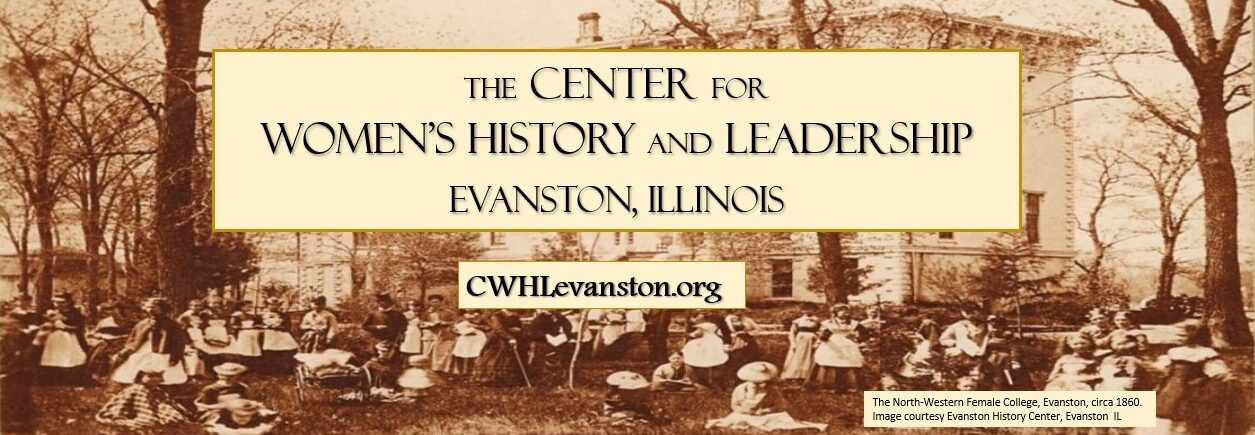I’m Cate LiaBraaten, and I have been the Museum Operations Manager at the Frances Willard House since 2018. I have worked on a variety of tasks and projects that range from administrative to curatorial. This spring, I will be leaving the museum to focus on writing my dissertation. As I leave this position behind, I wanted to reflect on some of the lessons I have learned as part of the Center for Women’s History and Leadership’s training program for emerging leaders in history and museums.
Women’s history is political history
I have appreciated and valued women’s history since I first became interested in the past as a girl, but it was never my academic focus: in fact, I never took a course solely dedicated to women’s history. At the Frances Willard House, women’s stories are centered. When women’s stories are examined, it becomes clear that women’s history is political history. I mean this in two ways: it is essential to understand women’s history in order to understand American political history, and various women’s movements themselves were full of political thinkers and strategists. The WCTU was the largest women’s organization in the nineteenth century; it is impossible to truly understand the cultural moment of the second half of that century without familiarity with the organization. Culture, naturally, shapes politics, and vise versa.
One question I like to ask Willard House guests on tours is: “How do you create change when you have no political power?” Because nineteenth-century women could not vote or hold political office, it can be easy to imagine that women were not political players or figures. The activism, lobbying work, and successes of the WCTU has proven that this is not true: women carved out political power for themselves and their goals when men sought to actively exclude them from political realms.
Through the work I have done here, it has become clearer than ever to me that women’s history deserves dedicated sites, museums, and college courses. These spaces can examine historic women’s lives and spaces and the obstacles that women have faced in accessing their rights as citizens of the United States (and indeed, their basic human rights). However, these stories cannot be relegated only to separate spheres, because women’s history is political history: women’s lives and work have directly shaped American history writ large.
Doing good history can be hard
I have not been directly involved with the Truth-Telling project, which focuses on Frances Willard’s failure of leadership on the question of lynching and her conflict with activist and journalist Ida B. Wells. Even though I did not work on it, this project makes me proud to be affiliated with the Willard House. I often think, this project is good history—meaning, it is good historical work. It tackles big and tough questions about how we evaluate and understand past people, and most importantly, as the title says, it puts historical truth first.
My inclination is to solely admire Willard and only focus on her bicycle riding and suffrage and temperance work. Women’s history is so often ignored and forgotten, that any criticism of a leader can feel like a betrayal: I want to celebrate both Willard and Wells and relegate criticizing historical figures to men’s history. Like a courtroom oath, though, good history requires the truth, the whole truth, and nothing but the truth.
The Truth-Telling project, and other projects like it, reminds me that historians have an obligation to do good history, not just feel-good history.
There is always more to the historical story
The sheer volume of historical content affiliated with the WCTU has been a continual source of amazement for me. Sometimes, small house museums can find it challenging to tell historical stories beyond the lives of the few people who lived in the home. This is not the case for the Frances Willard House. There are always more stories, which means there is always more to the big picture historical story of this country (and indeed, international stories as well). The work that WCTU women did (and continue to do) was wide-reaching and long-lasting. The WCTU archives contain so much information that demonstrates that women’s fingerprints are on every part of American history. The historical work of telling these stories, of understanding and interpreting them, will never be done. Instead of feeling overwhelming, that feels freeing: there will not be a time when there is no work left to do at this site.
Ideas are not a finite resource
I admit, I often have a scarcity mindset: I’m afraid of not having enough, not being enough. From snagging extra mini shampoos at hotels to despairing over the length of my dissertation, I often worry that I will come up short. The most personally significant lesson for me these last years has been that ideas are not a finite resource. One can always have another idea. Since I began working with the Willard House, I cannot count the number of ideas we have had for projects. Some of them we have done, and others we haven’t: maybe not the right timing, maybe a steppingstone to something better, maybe not enough resources, or maybe the idea just was not as good as it seemed at first.
The leadership here has taught me that it is okay if not every idea gets implemented immediately. There will be more ideas later. When we have ideas for projects, we can save them: maybe they will work another time, or maybe they can spark something new. There will be more ideas later. I have appreciated so much learning not to desperately cling to each idea as if it is the only one I will ever have. In fact, clinging to each idea less has helped to generate a better flow of new thoughts. As our world changed with the COVID-19 pandemic, we had to let go of several ideas and plans. More ideas came. More ideas will always come.
